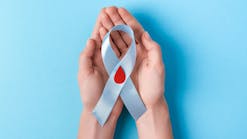The Observatory
Tainted milk scandal grows.
China's Ministry of Health efforts to stem the distribution of
melamine-tainted baby formula has grown since first reported in
September. Since then in China, more than 54,000 infants have fallen
ill, 1,300 were hospitalized, and four fatalities reported, with the
melamine being linked to kidney stones. The tainted formula was
manufactured by China's largest milk-powder producer, which admitted
that 700 tons of its product was tainted with melamine, a toxic chemical
used in plastics. The U.S. Food and Drug Administration officials (FDA)
assured Americans that infant formula made in this country is safe since
U.S. manufacturers do not use any ingredients from China. FDA safety
assessments are continuing. Just as the melamine scandal broke, the
Chinese Academy of Sciences began a collaboration with QIAGEN NV, a
global provider of sample and assay technologies, to develop new
molecular-testing solutions to improve the safety of food products.
Test scrutinized by FDA. According to
LabCorp, its OvaSure test — developed by Yale University to find
ovarian-cancer tumors in an early, treatable stage — has attracted
scrutiny from the FDA, which is not discussing its ongoing probe. Yale
researchers found the test correctly identified 95% of cancers; however,
specialists say those results do not prove the product can detect when
cancer is forming. LabCorp recently began marketing the screening test
for use with high-risk women under a law that allows a single laboratory
to offer testing without FDA review. Currently, competing companies are
seeking FDA approval for a different approach: Blood tests to help
identify which women with an ovarian lump or cyst are most likely to
have cancer, so they can have their crucial first surgery — the one that
diagnoses malignancy. British scientists just began studies designed to
prove whether indications of ovarian cancer can be measured reliably in
blood up to a year before a tumor becomes life threatening. At the same
time, researchers at the University of Pennsylvania have isolated a
possible marker for ovarian cancer: TEM1 is found in abnormally high
levels in the blood vessels surrounding ovarian tumors. CA-125 is now
the only serum marker available.
NY lab fees recalculated. The American Association of Bioanalysts
(AAB) filed a lawsuit nine years ago, alleging that the New York State
Department of Health (NYSDOH) overcharged the state's licensed clinical
laboratories. According to AAB's complaint, these fees were to be
limited to reimbursing the NYSDOH for the necessary costs of regulating
of clinical labs and blood banks. Fees had gone from $2.4 million in
1984 to more than $17 million today. AAB filed suit when it learned that
NYSDOH expenditures included unrelated salaries, equipment, travel, and
supplies. The presiding judge directed NYSDOH to recalculate only
appropriate fees for AAB's member labs.
HIV/AIDS
More funds for HIV infections?
CQ HealthBeat and The Los Angeles Times report that Centers for Disease Control and Prevention (CDC) officials said an additional $4.8 billion over the next five years is needed to reduce by 50% the 56,300 annual HIV infections in the United States over the next 12 years. Some federal lawmakers are attempting to increase funding for domestic HIV-prevention efforts (e.g., to expand testing/research, develop new prevention techniques, and evaluate prevention programs).
Conferences
Nov. 3-6. The APHL announces the 20th annual
“Newborn Screening and Genetic Testing Symposium” in San Antonio. Review
developments in newborn screening and collaborate on strategies to
address changes in the rapidly evolving field. Go to
www.aphl.org/profdev/conferences/nbssymp2008/Pages/default.aspx.
Nov. 5.From 2:00 p.m. to
3:30 p.m. ET, the AABB presents an audioconference on “Changes in the
New AABB Technical Manual” as they relate to WBC and platelet serology,
blood donation, transfusion and transplantation practice, red-cell
serology, and transfusion-transmitted disease. Look up
www.aabb.org/Content/Meetings_and_Events/Audioconferences.
Nov. 13-14.Attend the AACC
“Laboratory Medicine: Into the Future” conference held at the Waikiki Beach
Marriott Resort and Spa. The AACC and the AustralAsian Association of
Clinical Biochemists join to cover lab medicine's changes, challenges, and
advancements in management, science, and technology. Register at
http://direct.aacc.org/ProductCatalog/Product.aspx?ID=4736.
Feb. 10-11.At the
Molecular Summit 2009 at Philadelphia's Sheraton Society Hill Hotel,
meet global leaders and hear 27 speakers focus on integrated diagnostics
services that combine imaging with molecular diagnostics. Register at
www.molecular-summit.com.
April 28-29.The 14th Annual Executive War
College returns in 2009 to the Sheraton Hotel-New Orleans with a two-day
program designed to help lab administrators and pathologists learn
practical methods for improving the organizational performance and
financial success of their labs. To learn more and register, go to
www.executivewarcollege.com.
Industry watch
Instrumentation leasing. BioTek Instruments introduces options for its U.S. customers to lease and/or purchase its microplate technologies through North Star Leasing Company. Available are financing for up to 60 months, no-penalty early payoff, and a $1 instrument buyout at the end of the finance period. Contact:
[email protected].
Test for flu virus. A new genetic test for flu virus was announced on Sept. 30 by the CDC that developed the test with Applied Biosystems, Foster City, CA. The FDA has approved the test kit, and state health labs began using it immediately. The new method's main selling point is its ability to distinguish in hours rather than days seasonal flu strains from an evolving virus that might have pandemic potential. Doctors will be able to determine faster, better treatment and medication for flu patients.
Better statistics, less malaria. In its annual malaria report, the World Health Organization (WHO) cites 250 million cases of malaria worldwide each year and about 880,000 deaths — fewer than previously thought. The organization says the drop is a result of better statistical techniques rather than mosquito nets, miracle drugs, and DDT spray. The drop was noted in India, Indonesia, Pakistan, and other Asian countries, where many cases were caused by the less deadly vivax. Previous official estimates were 350 to 500 million cases with more than a million deaths. Asia relied on population and vegetation maps dating to the 1960s for its figures, resulting in the higher estimate. Since then, millions of Asians have migrated to cities; and millions of acres have been deforested, reducing mosquito habitat. As countries like India have grown richer, improved healthcare and better mosquito control have also contributed to more accurate statistics.
Gates' grant boosts vaccine initiative. Bill Gates announced in late September that his foundation is giving $168.7 million to the PATH Malaria Vaccine Initiative (MVI) to develop vaccines for malaria. PATH is working with GlaxoSmithKline Biological to develop the first-generation vaccine candidate, RTS,S, which could become the first-ever approved malaria vaccine. For more details, visit
www.gatesfoundation.org/press-releases/Pages/develop-next-generation-malaria-vaccine-080925.aspx.












